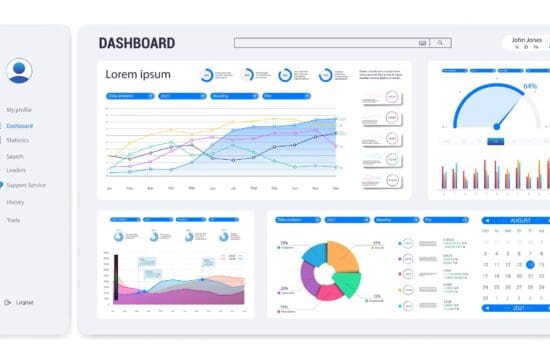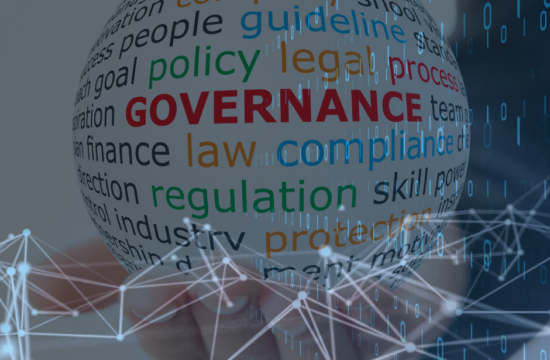Today Artificial Intelligence (AI) is a part of our day-to-day activities, and knowingly or unknowingly, it impacts our actions and decision-making. With the growing use of AI in almost all fields known to us, there is an increasing need for AI data governance to ensure data privacy, ethical use of data, and fairness and transparency.
AI governance basically refers to governing the ethical use, development, and deployment of AI technologies within an organization. There are generalized frameworks and tools to build and customize trustworthy AI systems for specific use cases. Why is AI governance important? Because it assists organizations to prevent biases, issues of fairness, and discrimination against customers and operate within legal regulations.
Why should an organization consider creating an AI data governance strategy?
- Ethical use of AI – While developing AI technologies within an AI data governance framework, AI engineers should develop AI systems that emphasize fair and unbiased decision-making. This ensures respect for human values and no discrimination based on age, gender, or ethnicity.
- Ensuring data privacy – AI systems process huge amounts of personal data that needs to be protected to respect an individual’s privacy. Using clean and organized data while processing for a certain activity will ensure that your organization complies with stringent regulations like HIPAA (Health Insurance Portability and Accountability Act) in the United States of America.
- Ensuring accountability – AI engineers need to develop AI systems that are trained to be responsible and transparent and prevent any errors in the decision-making process. Organizations and developers are accountable for the proper functioning of their AI systems that they have designed, developed, and deployed.
- Avoiding legal consequences – Organizations that prioritize safe use of sensitive information and adherence to data privacy laws safeguard themselves from legal consequences. There is always a risk of legal penalties and reputational damage when an organization fails to comply with existing and emerging regulations.

Drivers for AI data governance
Today, organizations are competing to win consumer trust and determine how efficiently they can serve them through AI-based services. The main component here is the quality of the data, which AI engineers should maintain to strike the right balance between accuracy and fairness. There are a lot of discussions around using synthetic data to mitigate bias and address data privacy.
Using synthetic data or artificially generated data is expensive to compute, and we don’t just dive right into synthetic data generation. There are a lot of synthetic generation techniques that data scientists undertake, such as Generative AI, data masking, entity cloning, and more, but at times they are simply not necessary. Synthetic data is mostly generated to mitigate a known bias, test a machine that’s already been trained, or evaluate the capacity of a model for testing purposes. There is a lot of value in using synthetic data to train AI models because, ultimately, organizations want them to make better and less biased decisions.
Another aspect organizations need to look at is clean and quality data to develop deep learning models. An AI model has to be accountable for all the features it relies on to produce fair outputs; otherwise, it might not be a fair model. It is important to pick the right data set so that your AI models do not produce biased outputs.
Techniques to measure fairness in AI and ML
Speaking in terms of measuring fairness in data libraries, most of the fairness scores that are generated by organizations today are custom or developed in-house and are not industry- or vertical-specific. There are a few libraries that have evolved in the past and use feature engineering, gradient-based tracing, or kernel-based tracing to figure out whether they are biased or fair.
One disadvantage of these libraries is that when you are creating your models, you have to embed libraries as part of the model. The only way you can introduce something outside is by collecting some data, dumping it into a matrix, and then performing statistical analysis to tackle the problem of biasness and fairness.
Create groups to understand what the odds ratio of a particular group is and what the impact is on the overall bias and fairness. Organizations should create fairness and bias quality scores for AI systems to understand how each feature is contributing, and versioning the models over a period of time can help them measure it.
Tips to set up AI/ML maturity and governance
- You need to have traceability inside your model, depending on whether you’re using a statistics-based model or a deep learning model.
- You cannot deploy something by copying code; it has to be versioned, and as part of the versioning, you need to keep track of the expected input and output to have some fairness and bias quality scores for your data.
- Set up real-time monitoring to look for data drifts and get alerted when your accuracy or F1-score deviates.
What should senior leadership set up in a governance framework?
The leadership team should invest in creating a governance body within their organization to help their employees categorize which data they can use and which they can’t. There can be a governance framework that each and every department in your organization can adhere to in order to be aware of the best governance practices.
Let’s say there are telecommunication laws in Europe that you cannot move the Media Access Control Address (MAC) address from one country to another, or there are laws around cross-country data transfers and one cannot move a database from Canada to the US. So, engineers and people from other departments are typically not aware of this, but somebody can create a model that can be referred to by other team members.
Creating a diverse theme will allow you to ensure that all the products minimize your risk, leading to a better outcome and enhancing trust with your customers. It is not just a data scientist’s or the technical team’s job to know what good data practices are. Basic AI and data literacy are things that everybody in an AI-enabled organization should be aware of. Leadership needs to take ownership of their organization’s values and ethics because people cannot uphold values that have not been defined for them. The same way, your data scientists don’t know what’s fair or ethical while developing AI models unless they have it listed somewhere.
Need for a governance body
There should be a neutral body that can comprise industry leaders and authorities and act as federal oversight to set the standards for fair use and protection of data. Government authorities are proficient at setting legal regulations and fair business ethics for an industry, and industry leaders can set best practices around the use of AI.
Federal authorities do not have AI experts, but the need for industry-specific frameworks for trustworthy or well-governed AI will always be there, so industry leaders can develop a mechanism along with the authorities that will be adhered to globally.
Secuvy’s AI-powered data governance platform for Personal Information (PI) and Large Language Models (LLMs) offers continuous data protection for organizations who are utilizing AI tools for their business processes. By partnering with Secuvy, organizations can feel confident that they are protecting their data, as well as their clients’ data, while automating security and privacy measures across diverse data landscapes.
Request a demo today at secuvy.ai





















